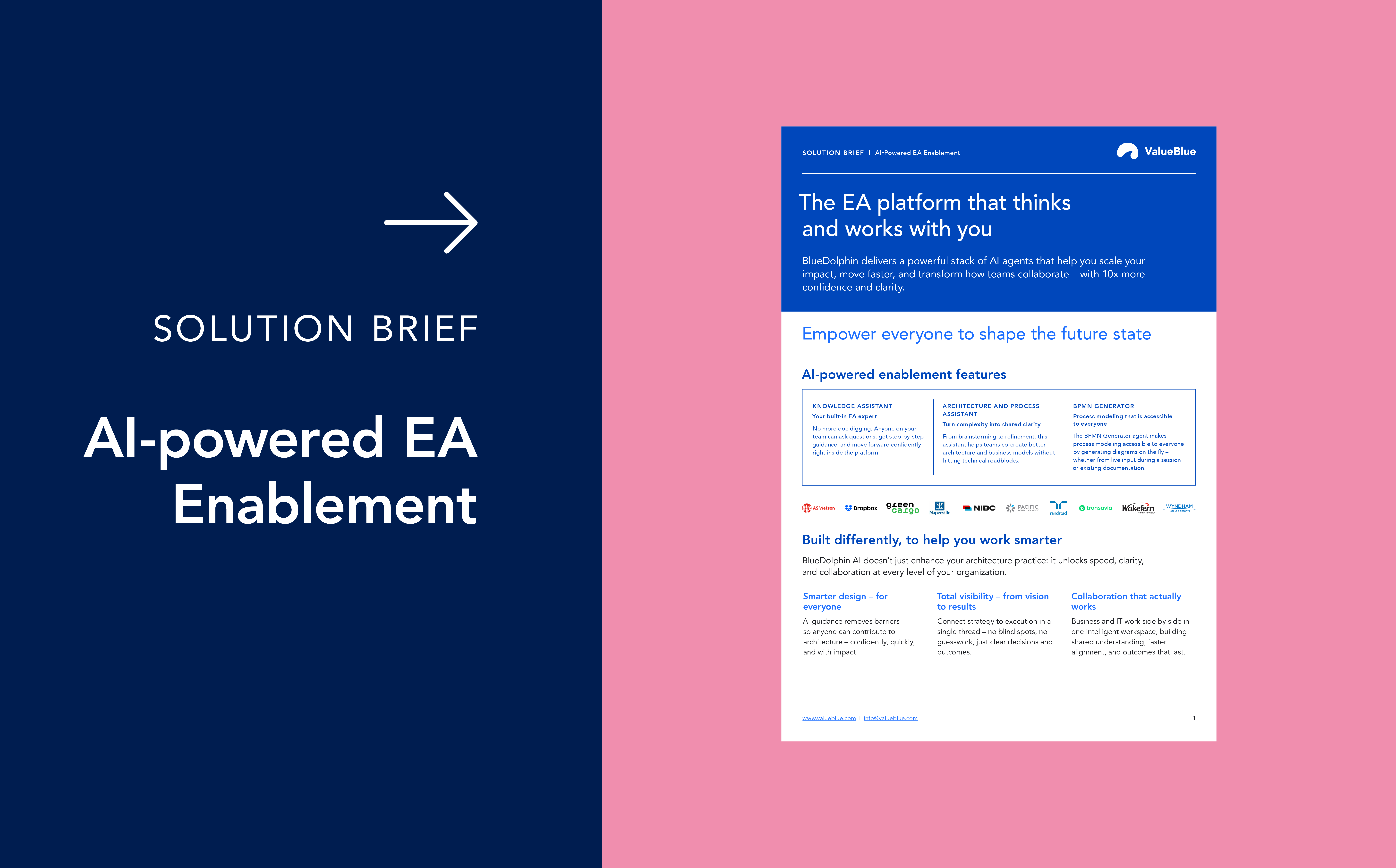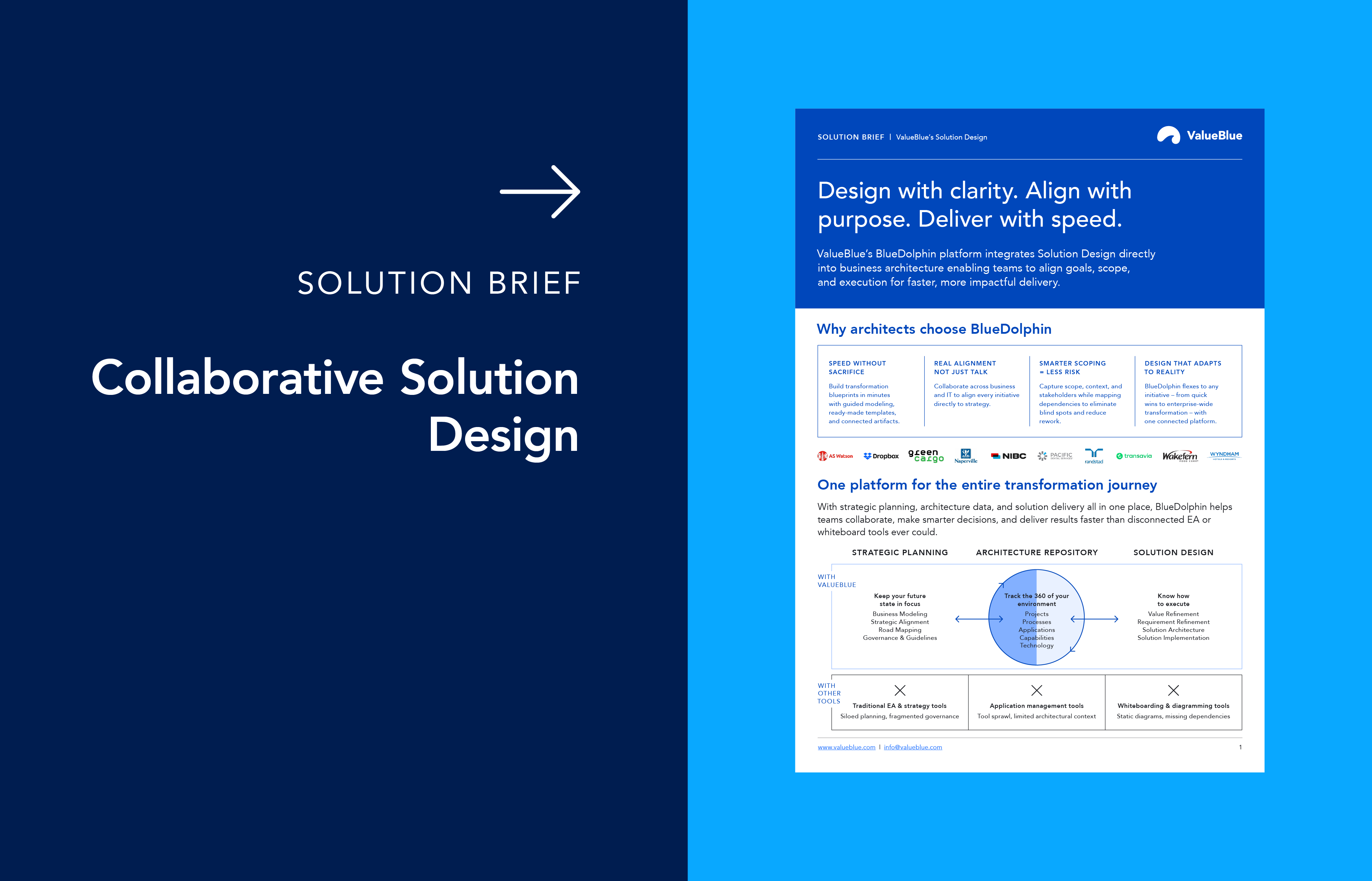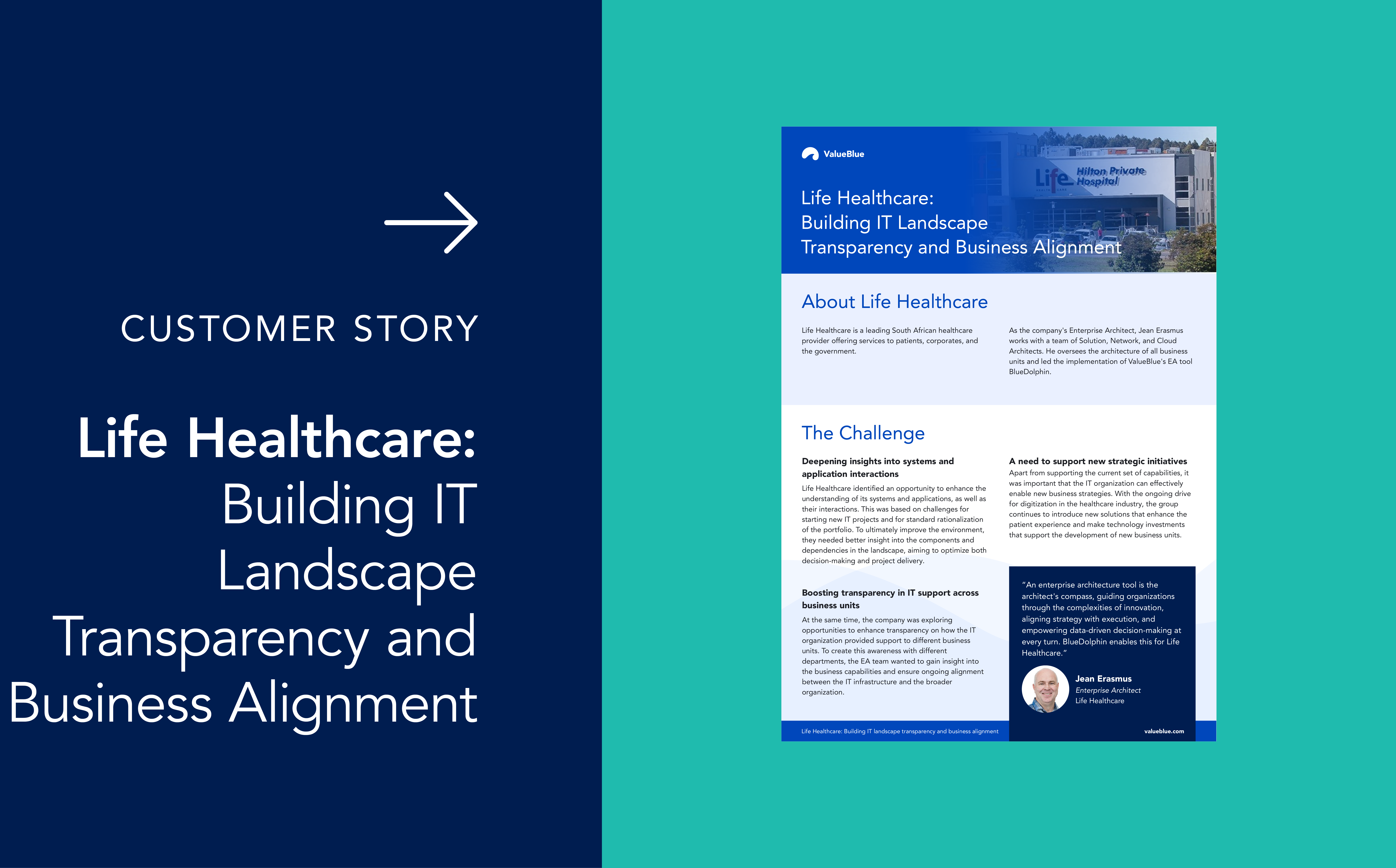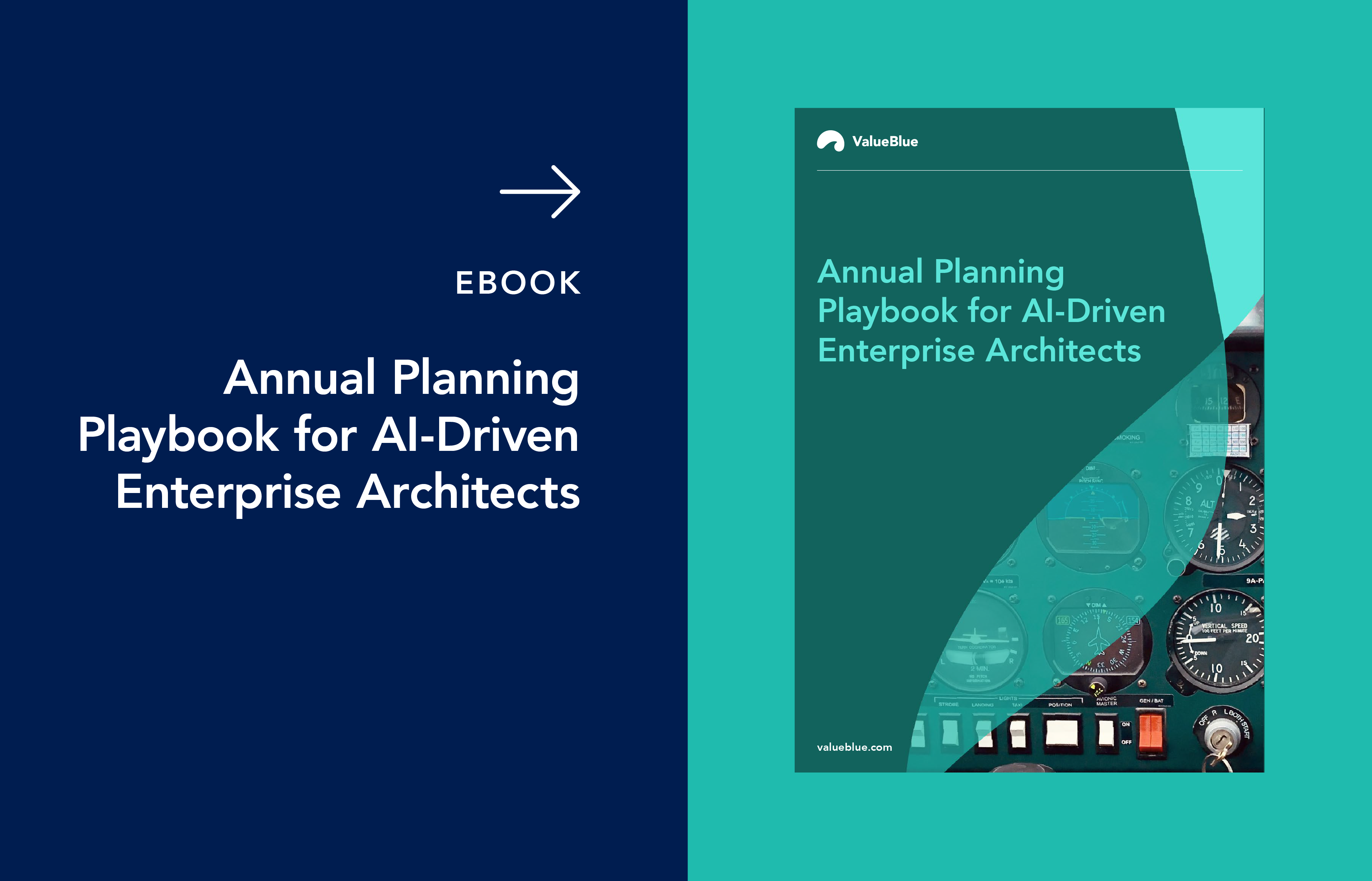ROI is King: Enterprise Architecture ROI calculation
The phrase "Le roi, c'est moi" – meaning "The king, it's me" or "I am the king" – is often mistakenly attributed to King Louis XIV of France. Although there is no historical evidence that he actually said this, there is some truth here. ROI is King – especially when it comes to business investments, such as building your Enterprise Architecture team.
Enterprise Architecture (EA) is a powerful discipline for planning and managing organizational change. It provides a structured framework to map your current business and IT landscape, identify potential improvement projects, and help execute them. Using EA, organizations can make data-driven decisions when defining and prioritizing change projects. This can improve agility, reduce operational costs, and create a roadmap for sustainable growth.
However, most Enterprise Architecture teams struggle to quantify their value. In a recent survey amongst ValueBlue customers, over 60% of novice EA teams cited "organizational and executive buy-in" and "difficulty in defining and measuring EA success" as their primary challenges.

Regardless of your organization's maturity, demonstrating the value of EA is essential. In this blog, we’ll explore practical ways to assess Enterprise Architecture's return on investment (ROI).
How organizations measure value in general
When organizations look at value, they typically express this in terms of:
1. Cost savings – Reduction in expenses through process improvements and efficiency gains.
2. Increased revenue – Additional income generated from new initiatives or operational improvements.
3. Risk reduction – Minimizing potential losses by identifying and mitigating risks early.
4. Shorten time to market – Delivering projects and results faster, and with that having benefits come in earlier.
These values are sometimes combined to compute the ROI as follows:
ROI = (Net profit/Cost of Investment) x 100%
All these values are tangible and can be expressed in euros or dollars. Unfortunately, this sharply contrasts with how most Enterprise Architecture teams attempt to quantify their value.
The value of Enterprise Architecture
When EA teams cite their value to an organization, they often talk about things like:
1. Better insights and streamlined reporting – Enterprise Architecture facilitates efficient IT reporting, reducing costs and enabling faster project execution.
2. Enhanced stakeholder engagement – EA addresses function-specific challenges, gaining executive buy-in and ensuring alignment with strategic goals.
3. Visual decision-making tools – Business capability maps and application landscape reports make complex data more accessible for leadership.
4. Optimized application portfolios – By rationalizing applications, Enterprise Architecture eliminates redundancies and reduces maintenance costs.
5. Faster project execution – EA improves collaboration and alignment, reducing delays and boosting project success rates.
The first three, although interesting, are very difficult to express in terms of real value, like dollars or euros. Better reporting or insights are great, but how do you explain the real value of this?
The last two seem more interesting, so let's explore these.
Eliminate costs by reducing Application Portfolios
Many EA teams take the following approach: they map out the application landscape, tie it to processes and business functions, and identify potential overlap. This potentially results in cost savings, both in license costs and the human resources needed. When new applications are requested, a quick check is sufficient to determine whether the company already has this functionality available.
However, reality is not as simple. Application Portfolio Management (APM) suffers from three drawbacks:
1. Not all applications are equal. Salesforce and HubSpot may be Customer Relationship Management (CRM) tools, but they each have their own strengths and weaknesses. Preferring one over the other will result in a loss of functionality, impacting the business.
2. Organizational resistance. Teams will be used to working with a particular product and will push back when their way of work is affected.
3. Removing an application is not that easy. Imagine using two Enterprise Resource Planning (ERP) systems and deciding to drop one. This will be a considerable change project, as the system is connected to many others.
Creating an ROI for Accelerating Business Transformation
For our ROI assessment, we will explore a different approach by ensuring that transformation projects are delivered on time and on budget. For example, let’s take a midsize e-commerce retailer with 1,000 employees. A couple of facts:
- For a midsize company, annual revenue is between $100 million and $1 billion.
- These companies allocate approximately 3% to 18% of their revenue to Information Technology (IT) budgets, but much higher for certain industries.
- On average, 44% of IT budgets get spent on business transformation and incremental business change (the remainder on business operations). Innovation and change spending is expected to increase to 55%.

- On average, these midsize companies run 10 to 30 innovation projects.
So, with all that, our company would have:
- $200M in annual revenues, of which $20M is spent on IT and $10M on transformation projects. With 30 projects, the projects would cost, on average, $300k.
- Let’s assume that these projects would bring:
- 8M expected savings (260k per project),
- 30M rev increase (1M per project).
So, on paper, this all looks fine: 
However, most transformation projects fail to deliver the expected results.
Research shows that:
- 70% of projects exceed planned time and budget.
- 31% expected revenue increase is realized.
- 25% expected cost savings are realized.

And when projects fail, the impact is significant:
|
Project |
Planned |
Actual |
|
Project costs |
300k |
525k (+75%) |
|
Cost saving |
260k |
65k (25%) |
|
Revenue increase |
1M |
310k (31%) |
So, with 70% of projects being over time and budget, the impact of your transformation project turns out to be very different: 
So, what would happen if you could make just a few more projects succeed?
Successful business transformation with Enterprise Architecture
This is where Enterprise Architecture (EA) can help you. It acts as a strategic bridge between business goals and IT investments, ensuring that every technology decision directly supports organizational objectives and delivers measurable value. By aligning IT and business strategies, EA optimizes processes and reduces redundant applications, leading to significant cost savings, but also enhances agility and accelerates innovation across the enterprise. It provides the structure and visibility needed to improve project outcomes, shorten time-to-market, and maximize ROI.
Moreover, the true power of EA lies in its ability to foster collaboration and break down silos between departments, creating a culture of shared ownership and continuous improvement. By adopting a business-outcome-driven approach, EA teams can quantify their impact in cost reduction, risk mitigation, and revenue growth, making it easier to secure executive buy-in and sustain investment in architecture initiatives. Ultimately, organizations that embed collaborative and outcome-focused EA practices position themselves for sustainable growth, resilience, and a lasting competitive advantage in the digital era.
To see an excellent Enterprise Architecture tool in action, book a demo of our BlueDolphin now!





